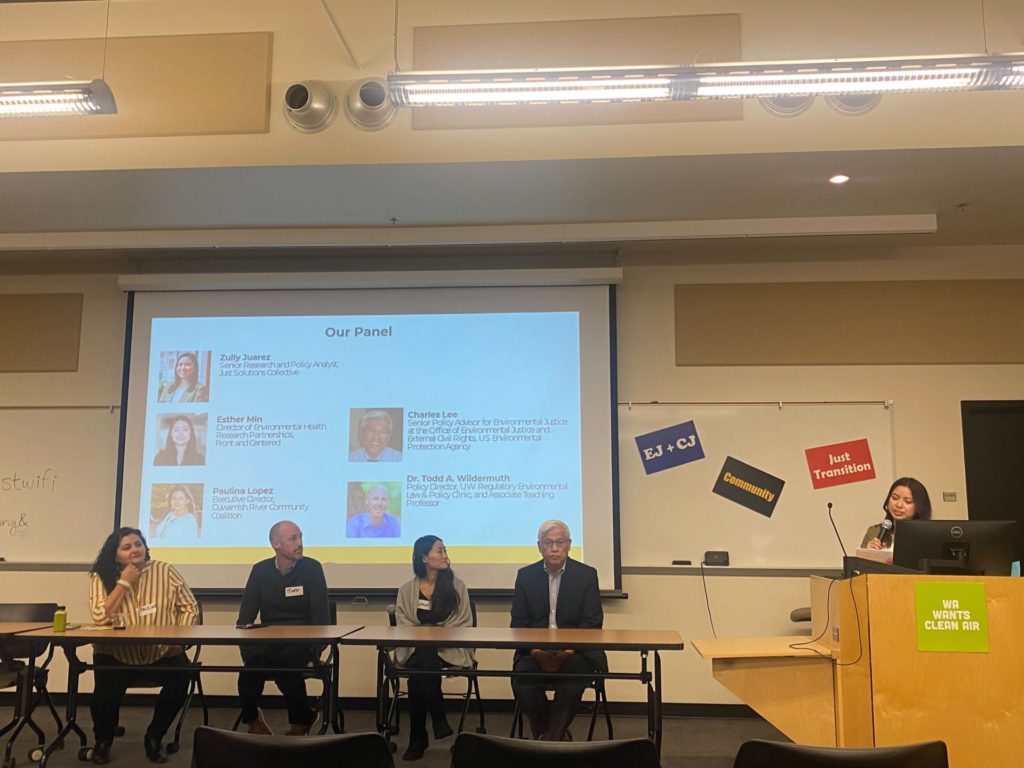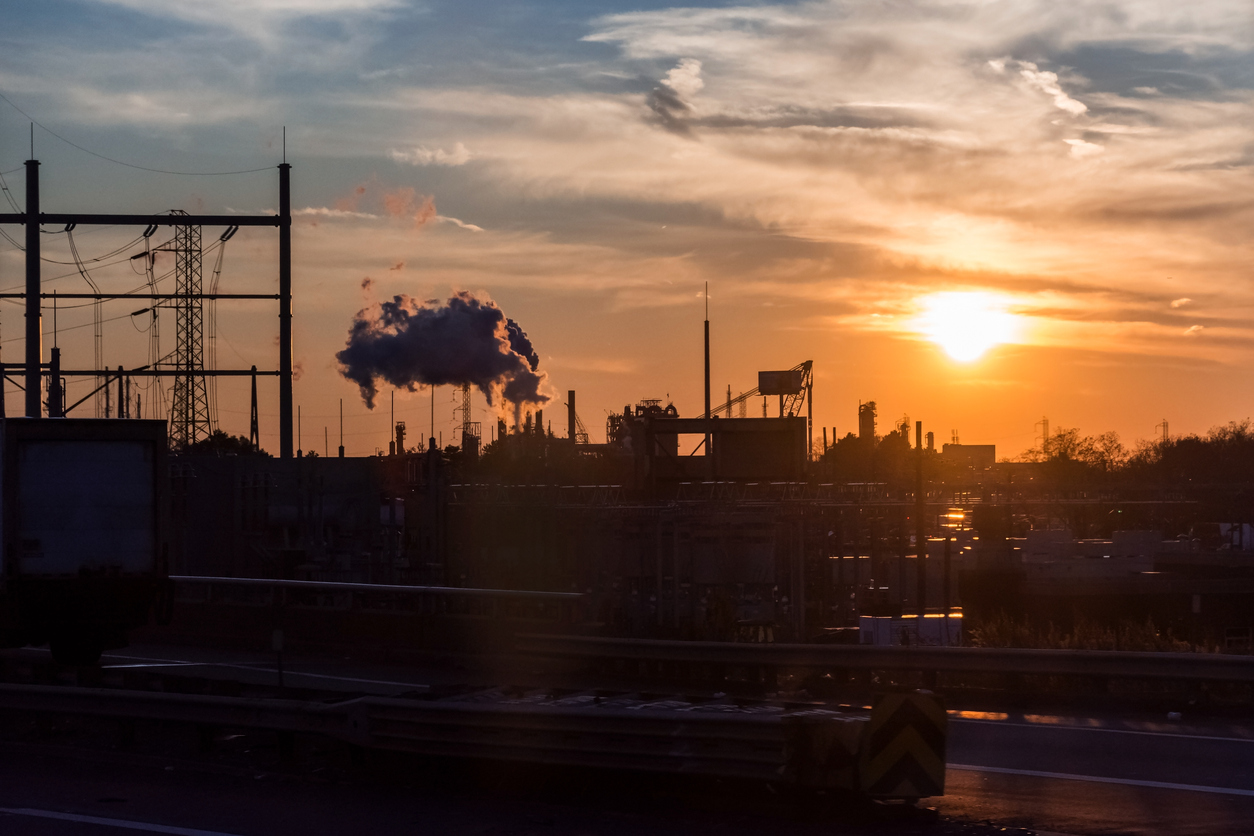Across the United States, Black, Indigenous, and communities of color are disproportionately impacted by pollution and environmental health disparities. Environmental health disparities exist when communities exposed to a combination of poor environmental quality and social inequities have more sickness and disease than wealthier, less polluted communities.1 Many of these environmental health problems and disparities are a result of racial and social injustices, such as decades of redlining that have placed polluting facilities in their neighborhoods.2 These same communities continue to strategize and innovate various ways to protect their health, even within the confinements of limited regulatory frameworks, to ultimately shift what is politically possible. This blog provides insight into how frontline communities are leading community-created solutions and using their political power to win and implement climate policies that strengthen their communities’ health, economic security, and resiliency.
State Innovation
At the local level, community-based organizations continue to successfully fight against environmental threats. These victories have launched systems-level change at the state level. Due to this advocacy, state-level environmental justice policies continue to gain momentum, leading to several states establishing task forces, commissions, and offices to address disproportionate health and environmental impacts of their programs and policies and in some cases incorporating environmental justice principles into the legislative and regulatory processes.3
Recently, we have seen states like New Jersey pass the strongest environmental justice law4 in the nation in 2020, becoming the first state to enable the state environmental agency to deny a permit for a facility that would cause adverse environmental or public health stressors on an overburdened community. Shortly after New York passed a law5 similar to that of New Jersey. These laws were made possible by the efforts of community leaders and advocates, legislative policymakers, and allies. With this momentum, how can the innovation from different states apply elsewhere?
Environmental Justice Efforts in Washington
In Washington, environmental justice advocates are following suit. Front and Centered is a coalition of communities of color-led groups across Washington State, whose purpose and work come together at the intersection of equity, environmental, and climate justice. They have worked on multiple efforts to address the cumulative impacts and disparities of frontline communities in Washington. In 2019, Front and Centered built and facilitated a unique cross-sector partnership to advance the Washington Environmental Health Disparities Map, which offers policy leaders and advocates data-driven insights into where people experience the greatest environmental health risk factors in Washington. They also worked to pass the Healthy Environmental for All (HEAL) Act which embeds environmental justice into state agency policies, budgets, and plans in Washington.
In November I was able to attend a community event hosted by Front and Centered, “Curbing Pollution in Frontline Communities,” where environmental justice organizations and local agencies gathered to discuss how cumulative impacts analysis plays a role in their state’s environmental justice strategies. Just Solutions was invited to participate by moderating a panel aimed at; 1) broadening and deepening the understanding of cumulative impacts and how cumulative impacts are experienced by communities, 2) discussing how communities can reduce disproportionate exposure to pollution, 3) exploring regulatory frameworks & right to healthy communities, and 4) contextualizing this at a scale and pace that matches the urgency of the climate crisis in Washington.

Paulina Lopez, Todd Wildermuth, Ester Min, Charles Lee, and Zully Juarez
Panelists included Paulina Lopez, the Executive Director of the Duwamish River Community Coalition; Dr. Todd A. Wildermuth, the Director of the University of Washington’s Environmental Program and Environmental Clinic; Esther Min, the Director of Environmental Health Research Partnerships at Front & Centered; and Charles Lee, the Director of the U.S. EPA Office of Environmental Justice. The panel discussion provided insight into:
- Community lived experiences of cumulative risks from pollutants and the ways it is currently accounted for in policy and health systems in Washington.
- The impact of using disproportionate impacts as a way to regulate pollution.
- Strategies in advancing policies that address cumulative impacts or disproportionate exposure to pollution.
- As well as hopes for new developments in the field of environmental justice.
Overall, attendees learned about the next phase of ensuring that cumulative impacts analysis is a core part of our state’s environmental justice strategies as well as the challenges and opportunities for policy change in Washington State. To hear a recording of the panel, please visit the Curbing Pollution: Policy Briefing.
What’s Next?
Shortly after their event, Front and Centered released a forthcoming legislative proposal that they are developing, called the Cumulative Risk Burden (CURB) of Pollution Act that upholds the following four key priorities:
- Requires monitoring of pollutants that effect health but are not currently addressed
- Specify communities that have been disproportionately harmed by pollution for specific protections.
- Require the Department of Ecology to deny new permit applications that add cumulative pollution effects and work with applicants seeking permit renewals that add cumulative pollution effects, to reduce pollution over time.
- Elevate the voices of community members through frontline community participation in the permit evaluation process.
To learn more or support their efforts Front and Centered will be updating their website as their work progresses. Just Solutions will continue to track and uplift the innovative state policies and laws of environmental justice policy leaders and advocates.
- National Institute of Environmental Health Sciences, Environmental Health Disparities and Environmental Justice ↩︎
- Historical Redlining Is Associated with Present-Day Air Pollution Disparities in U.S. Cities, National Library of Medicine, 2022 ↩︎
- State and Federal Environmental Justice Efforts, National Conference of State Legislators, May 26, 2023 ↩︎
- New Jersey Department of Environmental Protection ↩︎
- New York State Senate Bill S1031C ↩︎
